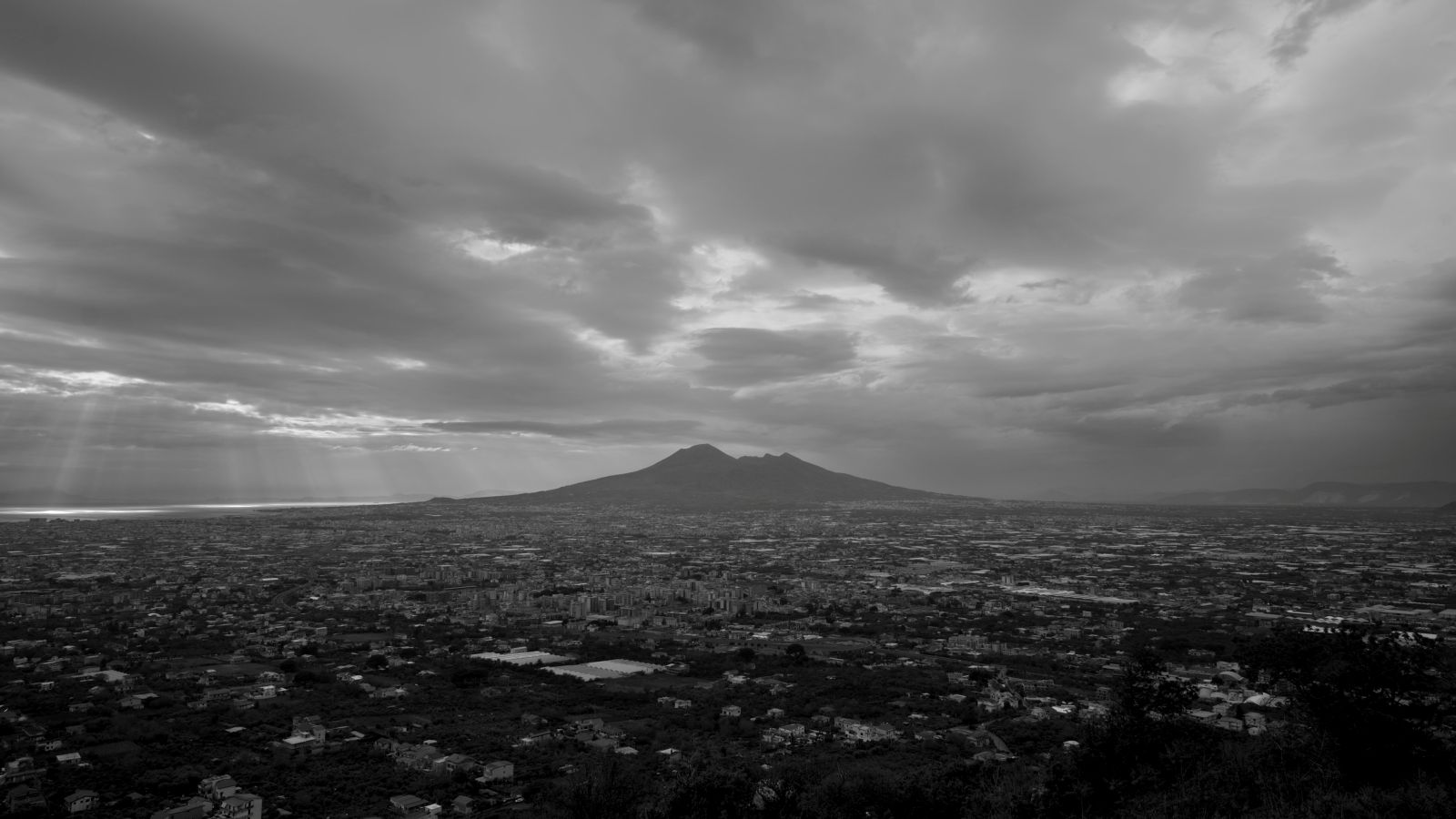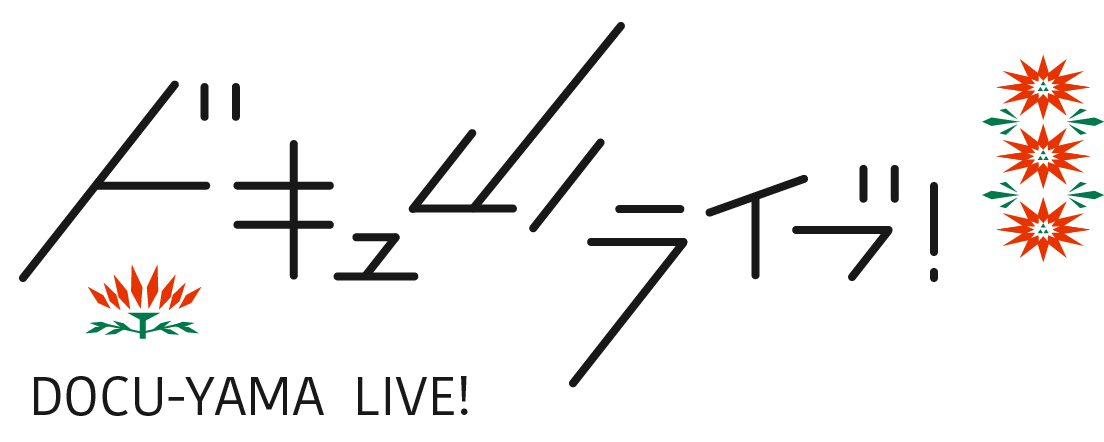
“This is a time machine, and we’re going back.”
The past is the true subject of Gianfranco Rosi’s Below the Clouds (Sotto le Nuvole, 2025; YIDFF 2025 International Competition). Yet Rosi doesn’t take us backward; instead, he shows that we have been standing on top of history all along. Through entirely black-and-white shots of a plaster-casted Naples—a city haunted by its own volcanoes—Rosi tells ghost stories of a place forever living on the edge of destruction. While he tells the story of contemporary Naples along many lines—locals and foreigners, students and researchers—most of the story develops above ground in the fire station, with concerned and dedicated dispatchers, and below, with the museum curators tending to the city’s history in a museum basement. The parallel tales of these groups make the city’s contradictions come most vividly alive: one concerned with protecting the present, the other devoted to preserving the past, both guarding Naples from sinking beneath the ashes of time.
The community of Naples is introduced—and almost entirely revealed—through the phone calls made to the fire department. Rosi doesn’t focus on educating, informing, or eliciting sympathy for Naples, its volcanoes, or its people. Below the Clouds is committed to beauty, which keeps us at a deliberate distance from the city’s living core. Yet this distance is not neglect; it is a method. By refusing the traditional tools of documentary empathy—interviews, exposition, background, voice-overs—Rosi turns to a unique form of seeing. The calls, half overheard, half imagined, give Naples a collective voice made of interruptions, background noises, and silences. Through them, Rosi demystifies the Neapolitans: they, like us, lose their cats, get locked outside, and suffer the big and small, ridiculous misfortunes that make lives ordinary. We cannot linger in that recognition even though we feel these people are close to us. The screen shifts—to seismic charts, to fallen statues, to endless specks of dust—and we are reminded that these people live quite literally on unstable ground. Without warning, the comic rhythm of everyday calls collapses into a unison of quiet terror: an earthquake has hit. “Will we be okay? Will another one come?” the callers ask. The dispatchers, moments earlier so calm and competent, must now confess their own helplessness before nature’s indifference. Under the weight of the past and the uncertainty of the earth beneath them, their answer is still the same as it would have been in 79 CE: “We have no way of knowing.”
In contrast to the wide and clear visuals of the fire department, the museum scenes are narrower and introspective, almost sacred. We are no longer dealing with the contemporary but with its ghostly double. Through the tight focus of a flashlight in the museum’s underground corridors, time seems to move at the tempo of dust. The half-lit marble and plaster cemetery is striking, with the long, solemn corridors gradually revealing themselves from different angles. It’s as if we are not just looking at them, but they are staring right back at us. The curator says it’s best to see with a light, with fire, because then you are forced to perceive the details. The film demands the same of us: the images are so genuine that we squint our eyes searching for answers in the past. Seduced by the beauty and obscurity of the images, it becomes dangerously easy to detach them from history. Their grandeur seems to transcend the limits of human existence, and their god-like forms observe us with a wisdom we may never truly comprehend.
However, these static human forms are not so different from us. It’s important to remember that these images also serve as reminders of our own future—one marked by decay and oblivion. Though the curators brush time away from the pieces and try to recall the past by reconstructing images, the missing limbs and frozen faces cannot tell the full stories we long to hear. The curator’s movements are almost ritualistic prayers against decay, but there is more to them: the headless busts, the broken legs, and the bubble-wrapped gods make us question the futility of such devotion. These statues, frozen in time, wait for their chance to leave the basement and be seen again. When analyzing the statues’ poses, the curator speaks of their hands—fingers pointed down, signaling defeat. The victorious, she explains, always remain on top. This allegory captures perfectly the dilemmas of an unstable city and of history itself: we, champions and masters of time, live in terror on top of our own ruins, until the day we too become history—and, helpless, must wait to be remembered and brought back to the surface, to be victorious once again.
Lorena Sampaio
![ドキュ山ライブ! [DOCU-YAMA LIVE!]](http://www.yidff-live.info/wp-content/themes/yidff-live_2017/images/header_sp_logo1.png)

